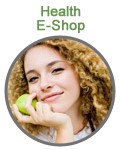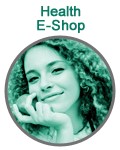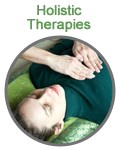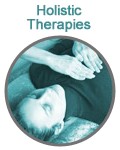Cleaning With Essential Oils
Chemicals in Modern Cleaning Products
It can be daunting to live a healthier lifestyle, and one of the last areas you may think to change is your cleaning products. Most modern cleaning products require certain chemicals and surfactants (or cleansing agents) to make them work, and you should know what they are and their potential effects. It’s also important to find ways to limit your exposure to these toxins, and learn about safe, effective alternatives.
Here’s a quick run-down of some common cleaning chemicals, along with some of the many places you may see them:
DEA - (Diethanolamine)—Found in more than 600 home and personal care products, such as shampoos, conditioners, bubble baths, lotions, cosmetics, soaps, laundry and dishwashing detergents. Suspected of carcinogenic activity (causing or contributing to cancer) or of being potentially dangerous or hazardous to health.
Propylene Glycol—The main ingredient found in anti-freeze; also common in shampoos, deodorants, cosmetics, lotions, toothpastes, processed foods, baby wipes, and many more personal care items. Implicated in contact dermatitis, kidney damage, and liver abnormalities; can inhibit skin cell growth in human tests and can damage cell membranes causing rashes, dry skin, and surface damage.
Sodium Lauryl Sulfate (SLS)—Industrial uses include concrete floor cleaners, engine degreasers, and car wash detergents. Also found in shampoos, liquid soaps, conditioners, cleansers, toothpaste, and children’s personal care products. SLS is found in nearly all toothpastes, and is absorbed through skin contact and retained for up to five days.
Talc—Chemically similar to asbestos, talc has been inked to ovarian cancer. It’s found in many body and baby powders, as well as many cosmetics.
Alcohol—Most mouthwash products have a higher alcohol content than most alcoholic beverages (beer, wine, etc). Mouthwash products with alcoholic content greater than 25 percent have been linked to cancers of the mouth, tongue, and throat. Alcohol acts as a solvent inside the mouth, making tissues more vulnerable to carcinogens.
Essential Oil Cleaning Solutions
It may not be possible or cost effective to avoid all of these chemicals in your cleaning and personal care products, but there are plenty of ways to reduce your family’s exposure to them. Using therapeutic-grade essential oils, as a natural household cleaner, is a safe, effective alternative to many store-bought cleaning products. Some of the best essential oils for cleaning include cinnamon, clove, eucalyptus, thyme, spruce, lemon, lemongrass, and grapefruit. Try some of the following ideas for a powerful, natural clean:
Natural General Purpose Cleaner with Essential Oils
Fill a spray bottle with water and a squirt of dishwashing soap.
Add 3–5 drops each of lavender, lemon, and pine essential oils.
Shake well.
Natural Essential Oils Floor Cleaner
Add 1/4 cup white vinegar to a bucket of water.
Add 5–10 drops lemon, pine, spruce, melaleuca, or Purification essential oil.
Fighting dust mites:
Recent research has shown that eucalyptus essential oil kills dust mites that live in bedding.
Add 25 drops of eucalyptus essential oil to each load of laundry for an effective dust mite deterrent.
Essential Oils Cleaner for Hot Tubs and Saunas
Use 3 drops per person of lavender, cinnamon, clove, eucalyptus, thyme, lemon, or grapefruit to disinfect and freshen the water.
For saunas, add several drops rosemary, thyme, pine, or lavender to a spray bottle with water and spray surfaces. This water can also be used to splash onto hot sauna stones.
Essential Oils Natural Cleaner for Kitchens and Bathrooms
Mix into 1 liter (quart )water: 2 drops rosemary, 4 drops lemon, 3 drops eucalyptus, and 4 drops lavender.
Shake well and put into a spray bottle. Shake again before using.
Window cleaner:
Mix in 1 liter (quart) spray bottle: 1 cup White Vinegar, 10-15 drops of Lemon Essential Oil, water.
Mix vinegar and water in spray bottle.
Add essential oil.
Shake and use.
Stain Removal with Essential Oils
Use a drop or two of lemon essential oil on stains.
Let stand and rub off with a clean cloth or throw into laundry cycle.
Using Essential Oils to Freshen Laundry - In the Dryer
Instead of using toxic and irritating softening sheets in the dryer, toss in a dampened washcloth with 10 drops of lavender, lemon, melaleuca, bergamot, or other oils added.
While the oils will not reduce static cling, they will impart a lovely fragrance to the clothes.
Young Living’s Most Popular Essential Oils for Cleaning
Lavender essential oil
Lemon essential oil
Pine essential oil
Cinnamon essential oil
Thieves® essential oil blend
Purification™ essential oil blend










